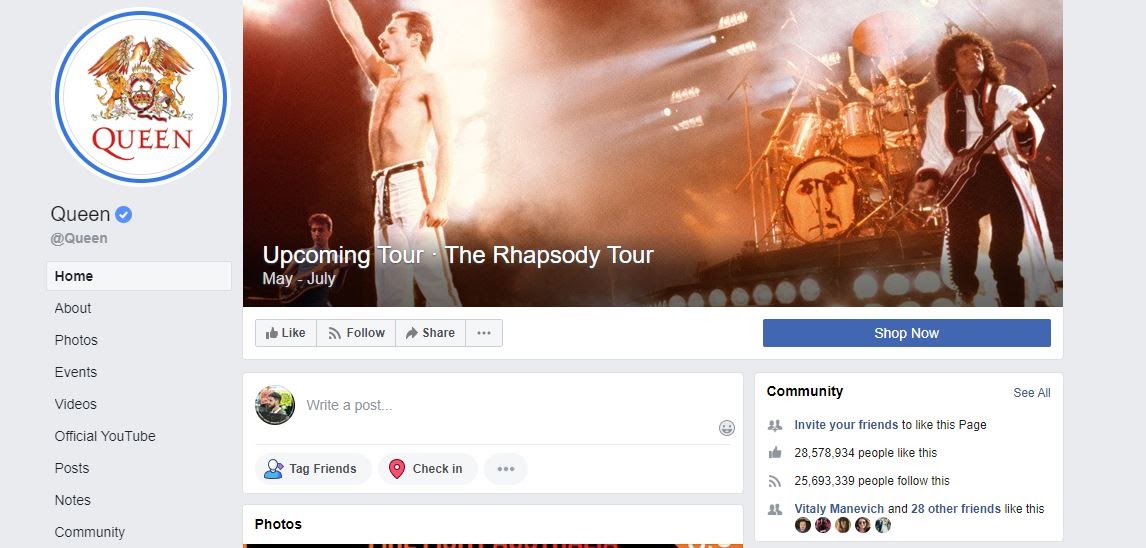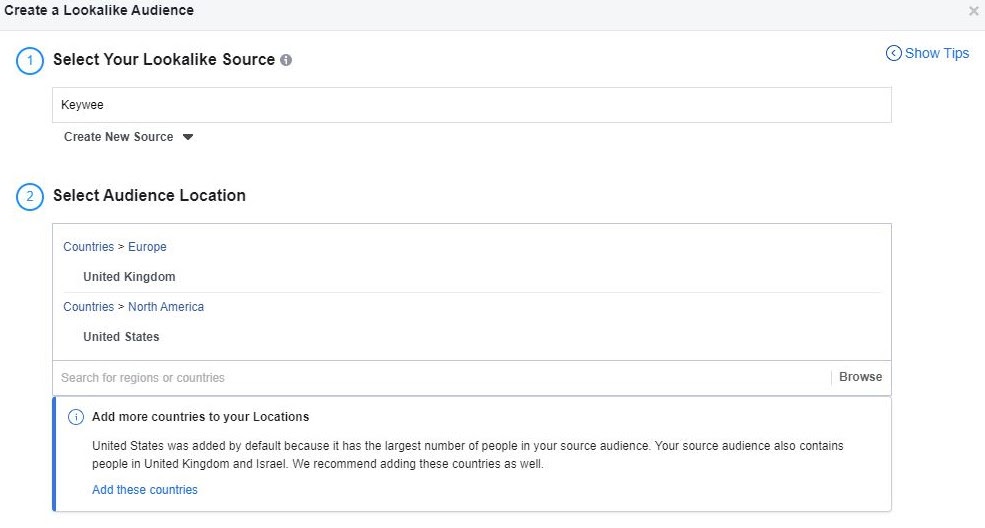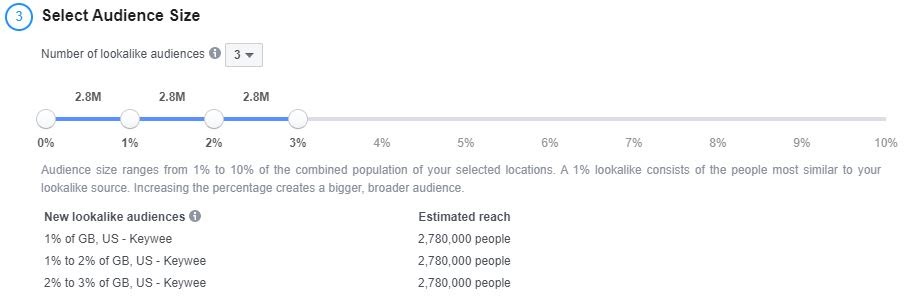What are Facebook Audiences and Why Do We Use Them?
Facebook and the host of platforms under its umbrella have become major components of many publishers’ paid content distribution strategies. The sheer reach that the platform offers is almost unparalleled, but its true strength comes from the targeting capabilities that it offers for paid promotion. It doesn’t matter who your target audience is — that demographic is likely on Facebook or one of the company’s affiliated apps. So what, exactly, is a Facebook audience? By definition, it’s a group of at least a hundred people that you can reach with paid advertising efforts. It can be as granular as a thousand users or as broad as hundreds of millions; it all depends on you and your needs. You can target specific ages, genders, fields of interests, social connections, past interactions, and many other attributes.
Can you reach any audience you want on Facebook? The truth is that you probably can. Will an eighteen-year-old from Savannah, Georgia click to read your article about retirement options near Glacier National Park? Probably not, nor will it be relevant to him or her. For that reason (and many others), you shouldn’t waste your budget on showing them your Facebook ads. Granted, this Savannah teen is an edge case, but it goes to show why knowing how to effectively use Facebook Ads Manager is an important skill. If you use it wrong, you might waste your reach on irrelevant users.
In the realm of Facebook, there are three types of audiences that you can target: Interest-Based Audiences, Custom Audiences, and Lookalike Audiences. Targeting these audiences will produce varying results depending on the revenue stream for which your campaign is built along with the stage of the content funnel at which your potential customers are in. Each audience type can be targeted separately or bundled with others.
Interest-Based Audiences
The scope of your interest-based audiences will depend on your market research and identifying your desired persona(s): what are their interests, where are they, and a myriad of other attributes. These audiences could be as broad or as narrow as you want — or need — but as a rule of thumb, you should always try to err to the side of slightly broader targeting. Keywee is able to find small and highly specific audiences and achieve scale by spreading budgets efficiently between a large amount of these audiences, but we are aware that without our unique technology it could be very hard to do.
Think of it as a gigantic buffet: there are billions of different audience permutations that you can target, and every interest group can be combined with another. You can segment audiences by age, gender, and location. There is practically no limit to how you can target your Facebook ads. But like Peter Parker’s Uncle Ben said, “With great power comes great responsibility.” Be mindful of your budget and bandwidth to optimize the campaign when you A/B test different audiences, and make sure your audience selection is based on data, not assumptions.
Currently, it’s not clear exactly how Facebook defines an interest and how its algorithms determine which users are included in it. Facebook’s algorithm relies on a huge dataset, and individual interests can be bigger than any single page or group because interests take into account a variety of variables, like browsing history across the web and previous interactions with content on the platform. For example, the band Queen’s official Facebook Page has 28.5 million Likes, whereas the Facebook audience for Queen is 240 million people worldwide.
As Facebook indicates in the Audience Definition meter on the right-hand side of the targeting interface, it’s possible for an audience can be too broad to be effective or too narrow to be reached. Here, it’s important to note that Facebook won’t let you run ads for audiences that are too small out of concern for their privacy. It’s the same logic behind Facebook’s policy regarding discriminatory content: a user shouldn’t ever be singled out. At the same time, Facebook allows you to run an ad for an audience that’s too broad, but the platform can’t guarantee that you’ll reach your target audience and it basically warns you that the ad will be ineffective.
You should also keep a few other things in mind when you plan your campaign and audience:
- Within the audience targeting options, there are five targeting “clusters”: location, demographics, interests, behavior, and connections. If your ads are promoting content, then usually only your interest-based targeting will change from one article to the other.
The location, behavior, and connections are usually relevant to the entire campaign and should remain constant.
If you’re aiming for the top of the funnel, we recommend that you exclude your current page connections (Likers) to reach new users. It’s also best practice to test different combinations of interests, age groups, and genders for each article based on who would find the content relevant.
Pro Tip: You can never be entirely sure of the accuracy of your assumptions. Test wild-card audiences that you think might work and see if they perform well.
- Highly targeted and relevant audiences will likely garner high Click Through Rates (CTRs), but they might also require a higher investment to reach them — a higher Cost Per Milli (CPM). Facebook’s ad targeting works on supply and demand: if you target a small audience that’s limited in supply, the price is going to be higher.
Pro Tip: Your target audience will rarely be smaller than 100,000 people. If it is, try allocating smaller budgets to limit the demand.
- If it’s the first audience that came to your mind for a particular article, then there’s a good chance that it will also be the first audience that your competitor thought of for a similar article of their own. On Facebook, like all other ad platforms, getting a user to click your ad first will boil down to the highest bidder. You could win, you could lose, but you will not get the best price per click if you target that particular audience.
Pro Tip: Research other interests that have the same demographic composition as your top-of-mind audience. For example, an article about “6 Romantic Proposal Ideas” got a CPC of $0.13 when targeting audiences like “engagement ring,” but Keywee got a CPC of $0.06 with Facebook ads targeting users interested in “astronomy.”
- Facebook auto-optimizes your ad delivery. Choose the right metric for it to optimize against, and the algorithm will take care of the rest. This is why it’s better to target slightly broader audiences than to go too narrow. For example, if your Facebook ad targets all US-based users that are interested in “content marketing” with the goal of getting clicks to your site, Facebook may inadvertently optimize it to be served predominantly to women living in NYC.
Custom Audiences
Custom audiences are a way to re-engage with readers who have already interacted with you in some way. It could be that they engaged with your Page, interacted with your website, or that they subscribed to your newsletter. Now that your interaction with the audience has begun, the custom audience tool allows you to retarget users with a higher degree of precision.
Where do you get the data to create a custom audience? You could create an audience using data from your CRM, which is one of the ways we recommend collecting newsletter subscribers. You could also create a custom audience based on organic engagement with your readers. Here it’s worth noting that only those who engage with you within the specified timeframe will be automatically added to the audience, otherwise they’ll removed if they haven’t engaged once the timeframe has lapsed.
Put another way: if you tell Facebook to use 45 days as the engagement cut-off and someone engaged 40 days ago, that person will be included in your audience. If that same person doesn’t engage again within the following week, he or she will be removed from the audience. This situation is yet another reason why you should post content that reflects your identity and values and doesn’t attempt to simply earn a lot of free, irrelevant engagement.
At the end of the day, if you want to get a user to buy a subscription or trust your affiliate-revenue-oriented content, the fact that he or she liked that cute puppy video you posted a week ago doesn’t do you any favors. You want every interaction with the reader — from the very first post Like and until the final conversion — to echo your values and justify a conversion.
With our partners, we always recommend implementing the Keywee Pixel, or, at the very least, we recommend that they share their Facebook Pixel with us. With more information at hand, our optimization algorithm can better adjust the campaigns more frequently and with greater granularity. Some of the variables that Keywee can optimize for with the Pixel are traffic quality as measured by time spent on a page, which we quantify with our Loyalty Score. The Pixel is a must-have to create some audiences, since, for example, it’s based on traffic to a specific article or sub-section in your site. Moreover, some goals require you to install a Facebook Pixel to optimize for them. Facebook needs its Pixel installed to “see” specific events like the number of page views per session, a purchase, a click to an affiliate site, or funnel drop-offs in order to optimize for these events. You can also use the Pixel to track and optimize for the events as well as build audiences based on them. Once you create the custom audience, you can target it with ads that will take your readers to the next step in their user journeys.
Pro Tip: Align the audiences that you create with your funnel and KPI. For example, if your goal is to register more paying subscribers, your Facebook ad should be optimized for users getting to the end of your subscription funnel. You should also test a lot of different audiences based on different funnel depths and drop-off points. Try reengaging with readers who hit the paywall, those who clicked on the call-to-action, users who dropped toward the end of the funnel, etc. Each of those audiences could feed the next one in the funnel, AND they can be used to create lookalike audiences.
Lookalike Audiences
Lookalike audiences are, as the name suggests, audiences that Facebook creates that are similar to an initial input of information known as a source audience. A source audience can be:
- A previously created custom audience.
- A list of current subscribers. (Again, a newsletter subscriber list is a treasure.)
- If you have a pixel installed, then traffic/conversion data from your site are great.
For Lookalike audiences, Facebook recommends that your source audience size be between 1,000 and 50,000 people, and that those who comprise the audience be as close to your ideal customer as possible. Facebook will automatically determine the similar traits of the source audience users (e.g age/gender/location/interests) to create a similar audience that you can target.
Pro Tip: If you create a Lookalike audience based on all of your existing users from multiple relevant countries, it will make paid distribution more efficient. How? The same audience can be used on multiple ad sets, each targeting a different country. This will A/B test which country drives the most valuable new audiences without cluttering your audience list.
The next step is to determine how similar to the source audience the Lookalike should be. The higher the similarity, the smaller the audience and the potential reach. A broader audience will be less like your optimal user. For example, if you choose the most similar audience, it will be 1% of the target country’s users who are most similar to your audience.
If you want to test different audience sizes against one another — and we always advocate for as much testing as possible — here is what you should do: repeat the audience creation process with the same source audience, and create audiences that gradually increase in size. For example, create audiences that are the one, three, and six percent of users most similar to the source audience. Each audience will contain the users that populate the smaller audiences. This will give you insight into the balance between reach and quality.
Pro Tip: The more niche of a topic(s) that you article covers, the better results you’re likely to see from smaller, more similar, audiences.
If you want to test how the affinity to the source audience affects performance, here are the steps to take: Create multiple, mutually exclusive lookalike audiences with different levels of similarity to the source audience. These audiences are created by changing the “Number of lookalike audiences” in the dropdown window. As you can see in the example above, this creates audiences that are increasingly different than the source audience yet have a constant reach and size.
Tips, Tricks, and General Shticks
Dynamic Lookalike
If you or your advertising partner has API access to Facebook’s Business Manager like Keywee does, it’s possible to create a lookalike audience whose source is the Facebook campaign the ad set is being uploaded to. This means that whatever the campaign is optimizing for, be it Subscriptions, Clicks, Video Views, etc., the ad set will target the audience most likely to perform best.
It also means that as time progresses and the results change, the dynamic lookalike will adapt and include the new best-performing users in its dataset. For example, when you add a new ad set that targets a new interest group or geo-location, it may start to out-perform the rest.
Layering
It’s common to use a layered approach when running ads with interest-based audiences. If you cover the Houston area and aim to get new paid subscribers, it’s likely that users from outside of Texas won’t be relevant. Sure, they might visit the site once or twice for a specific article or articles that spark their interest, but can you provide enough value for them to convert to paying subscribers? In cases like this, we recommend adding a geographic layer to the targeting that limits the audience to only users living in Texas. You can take the same approach and consider adding on additional layers such as age on an article-by-article basis, or for the entire subscription-generation campaign.
Consider the user’s intent when you think about adding more layers; if your goal is to generate ad revenue, you don’t need the users to demonstrate a strong intent and your layering can be kept to a minimum. If they need to invest more time to watch a long video, subscribe to a newsletter, or purchase a subscription, it’s advisable to add more layers.
You Do You
So, what approach should you take to target the right audiences for your Facebook ads? Some people would tell you that it’s the custom audience — their retargeting efforts get them amazing results! That might be true, but you might also be a newer company with fewer data to use in your retargeting.
Some would tell you to do lookalikes — trust the algorithm and it could work well, but what happens when you want to know who your audience is built of? There is less information for you that way, and we’re living in an information economy.
At Keywee, our forte is interest-based targeting, so we recommend those approaches as the best tools in your tool belt. While these strategies produce the best results, they’re not possible for everyone to employ at scale. Only with our AI and performance-based optimization algorithms can manage such a large amount of ads. For us, in 2020 so far, one ad out of five has been using Facebook’s interests for targeting. With hundreds of thousands of ads, it’s not something you might want to do in-house.
At the end of the day, you should test the different audience targeting options and try to determine what works best for your revenue stream, funnel, and budgets.
Final Words
If used properly, Facebook is an incredible tool. It lets you target new audiences, retarget visitors and expand your audiences with its data. I have yet to see a business goal that can’t be supported by Facebook’s ads. In the realm of publishers and online media, the flexibility of Facebook’s ad targeting means that it can be made to fit most content-based funnels. Facebook can also drive a positive ROI for publishers distributing various types of e-commerce and affiliate, subscriptions, ad revenue, newsletter acquisition, branded content, and any other revenue stream.
At the end of the day, it’s not a question of if you can make Facebook paid distribution work for you, but rather how.
If you’d like to have a quick chat and see if our experts can help you answer your burning questions, you can click here to book a demo.






